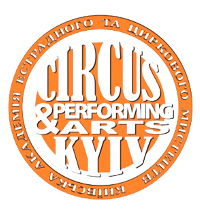Mukachiv art school named after s. Marton within the context of genesis and development of occupational education of Zakarpattia
Abstract
The article is dedicated to mastering the activity of Mukachiv art school named after Stepan Marton from the viewpoint of revealing the role in the evolution of regional and national occupational education. The authors have confirmed the following: late 20th century in Zakarpattia is characterized by music culture development. A significant role in this process was played by the aforementioned institution. Its establishing and development embraces a number of periods. The time from 1945 to the 50s of the 20th century is the one of founding creativity principles that combined West-European and East-European teaching traditions. The 60s – 80s of the 20th century is further pace featured by increasing the student contingent, improving the content of training, perfecting the trainees’ professional level, branch opening (later having become autonomous institutions), implementing a large-scale music and educational practice. The 90s – 2000s is the time of re-orienting the school’s activity in accordance with contemporary basics, European integration, receiving the honorary title of “perfect paragon” by a range of groups; creating new departments, obtaining the art institution status (1996); entitling Stepan Marton’s name (1999). The year of 2020 is the one of reorganizing the establishment due to civilizational requirements of the 21st century. Nowadays the institution, alongside with traditional events and didactic dedication, is being involved in various international projects. During its nearly eighty years’ history, the school’s activity promoted nurturing a significant number of musicians, facilitating the concert life of the region, shaping the audience with a high-quality aesthetic taste. The practice of the institution has a nationwide importance as a lot of its graduates have become world-level experts popularizing Ukrainian art in many countries.
References
2. Дацків І. Історичні та соціально-культурні передумови формування професійної освіти у Закарпатті. Науковий вісник Ужгородського національного університету. Серія «Педагогіка, соціальна робота». 2014. Вип. 33. Сс. 54-57.
3. Дацків І. Підготовка фахівців у галузі музичного мистецтва на Закарпатті (1919 – 1939 рр.). Людинознавчі студії. Серія “педагогіка”. 2015. Вип. 31. Сс. 127-133.
4. Коваленко А. Розвиток вітчизняної музичної освіти ХХ століття: до проблеми періодизації. Проблеми підготовки сучасного вчителя. 2016. №14. Сс. 290-300.
5. Мадяр-Новак В. Музична фольклористика Закарпаття: етапи, постаті, здобутки (кінець ХVІІ середина ХХ ст.) : дис. … кандидата мистецтвознавства : 17.00.03. Львів, 2021. 371 с.
6. Микуланинець Л. Етнокультурні виміри становлення та розвитку професійного музичного мистецтва Закарпаття другої половини ХХ століття. Ужгород: Карпати, 2012. 212 с.
7. Росул Т. Музичне життя Закарпаття 20 – 30-х років ХХ ст. Ужгород: ПоліПрінт, 2012. 208 с.
8. 60 років Мукачівській школі мистецтв №1 ім. С. Мартона. Мукачево: Карпатська вежа, 2005. 18 с.

 ISSN
ISSN  ISSN
ISSN 



